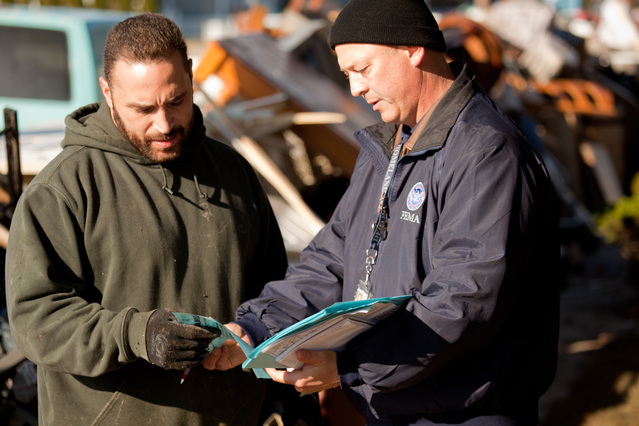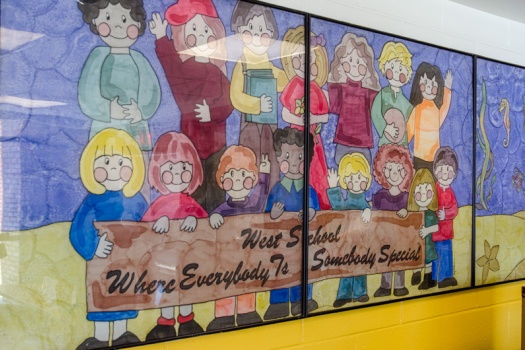The purpose of this page is to provide the latest information on New York Sandy recovery efforts. The intended audience includes Sandy survivors, elected officials, media and anyone who is interested in learning more about New York recovery programs. This page includes links to other content.
Hurricane Sandy Third Year Anniversary
It is has been three years since Hurricane Sandy made landfall on Oct. 29, 2012. Communities are building back stronger and becoming more resilient for the future. Through collaborative partnerships between state, local and federal agencies, schools, hospitals, transportation systems are being revitalized.
In the three years since Hurricane Sandy struck New York, FEMA and the U.S. Small Business Administration have provided nearly $16.9 billion to help get people back to their homes and businesses and restore hospitals, schools, public housing and other public buildings.
Recovery Timeline
View a timeline that depicts key recovery milestones which reflect the commitment of local, state and federal partners helping New Yorkers rebuild smarter and stronger.
Hurricane Sandy Three Years Later: News Release
View the third year anniversary News Release.
Hurricane Sandy Three Years Later: Photos and Videos
Long Beach Public Schools - Learn how FEMA continues to support the restoration of New York's infrastructure damaged by Hurricane Sandy. Here you will learn more about the rebuilding of public schools in Long Beach, Long Island.
NYU Langone Medical Center - Learn how FEMA continues to support the restoration of New York's infrastructure damaged by Hurricane Sandy. Here you will learn more about the recovery and mitigation strategies used by NYU Langone Medical Center.
About Us: The New York Sandy Recovery Office
The New York Sandy Recovery Office was established to support long-term recovery efforts in New York following the devastation of Hurricane Sandy. In the days following the storm, FEMA established a Joint Field Office in Forest Hills, Queens. In January 2014 the Joint Field Office became the Sandy Recovery Office.
The Sandy Recovery Office coordinates the efforts of multiple federal agencies providing support to communities as they rebuild to make New York stronger and more resilient. The Hurricane Sandy Rebuilding Strategy, issued in August 2013 by the President’s Hurricane Sandy Rebuilding Task Force, mandated that federal agencies “work collaboratively with partners across all levels of governance … and the private sector to promote a regional and cross-jurisdictional approach to resilience.”

Sandy made landfall Oct. 29, 2012, impacting a metropolitan area with 13 million inhabitants, killing dozens of people and damaging more than 100,000 homes. Ten thousand people took refuge in shelters; many more were displaced. One quarter of all telecommunications capacity was knocked out.
Sandy brought major coastal flooding to the New York coastline, along the entire south shore from Staten Island to Montauk Point and in bays and rivers. Liberty and Ellis islands were flooded and had to be closed for repairs. The tourism industry estimates it lost 400,000 visitors because of Sandy. The storm caused billions of dollars in damage to vital infrastructure systems including power transmission, transportation and water and sewage treatment facilities.
FEMA and its state and federal partners deployed nearly 8,000 personnel at the beginning of the disaster. More than 40 federal agencies participated in the response. The Air Force flew power company trucks from California. The Army Corps of Engineers installed 211 generators at vital facilities and pumped out subways and tunnels. Nearly 1,200 FEMA specialists went door-to-door in affected neighborhoods. These efforts supported the robust response of city, county and state officials, along with numerous volunteer organizations.
In the weeks and months after Sandy hit, more than $8.8 billion in federal assistance was approved in Individual Assistance grants, Small Business Administration low-interest disaster loans, flood insurance payments and Public Assistance grants to support New York’s ongoing recovery from Hurricane Sandy.
Public Assistance
 FEMA’s Public Assistance Program provides grants to state, local and tribal governments and certain private nonprofit organizations to assist with disaster response and recovery, including debris removal, emergency protective measures and permanent restoration of public facilities and critical infrastructure. In New York, approximately $12.4 billion has been awarded to date for Public Assistance projects.
FEMA’s Public Assistance Program provides grants to state, local and tribal governments and certain private nonprofit organizations to assist with disaster response and recovery, including debris removal, emergency protective measures and permanent restoration of public facilities and critical infrastructure. In New York, approximately $12.4 billion has been awarded to date for Public Assistance projects.
Mitigation
 FEMA’s Hazard Mitigation Grant Program (HMGP) provides grants to states and local governments to implement long-term hazard mitigation measures after a major disaster declaration. The purpose of the HMGP is to reduce the loss of life and property due to natural disasters and to enable mitigation measures to be implemented during the immediate recovery from a disaster. The program is administered by the state and funded by FEMA. To date, approximately $545 million has been awarded for projects in New York.
FEMA’s Hazard Mitigation Grant Program (HMGP) provides grants to states and local governments to implement long-term hazard mitigation measures after a major disaster declaration. The purpose of the HMGP is to reduce the loss of life and property due to natural disasters and to enable mitigation measures to be implemented during the immediate recovery from a disaster. The program is administered by the state and funded by FEMA. To date, approximately $545 million has been awarded for projects in New York.
Assistance to Households
 FEMA’s Individuals and Households Program has approved for assistance 117,664 New York households that were damaged by Hurricane Sandy. Approximately $1 billion in assistance has been provided for temporary housing, repair or replacement of eligible damaged property and other disaster-related expenses not covered by insurance.
FEMA’s Individuals and Households Program has approved for assistance 117,664 New York households that were damaged by Hurricane Sandy. Approximately $1 billion in assistance has been provided for temporary housing, repair or replacement of eligible damaged property and other disaster-related expenses not covered by insurance.
Resources
Flood insurance, flood risks and how to file claims: Floodsmart.gov
Track Sandy recovery spending:
Federal- Disaster relief funding map
New York State- Governor's Office of Storm Recovery
Get information on New York State and New York City recovery programs:
Accessible housing resources: Accessible Housing Recovery Resource
Historical Information
Hurricane Sandy: Two Years Later
Access federal partner resources: Federal Emergency Management Agency, U.S. Department of Housing and Urban Development, U.S. Department of Commerce, U.S. Army Corps of Engineers, U.S. Department of Health and Human Services, U.S. Department of the Interior


